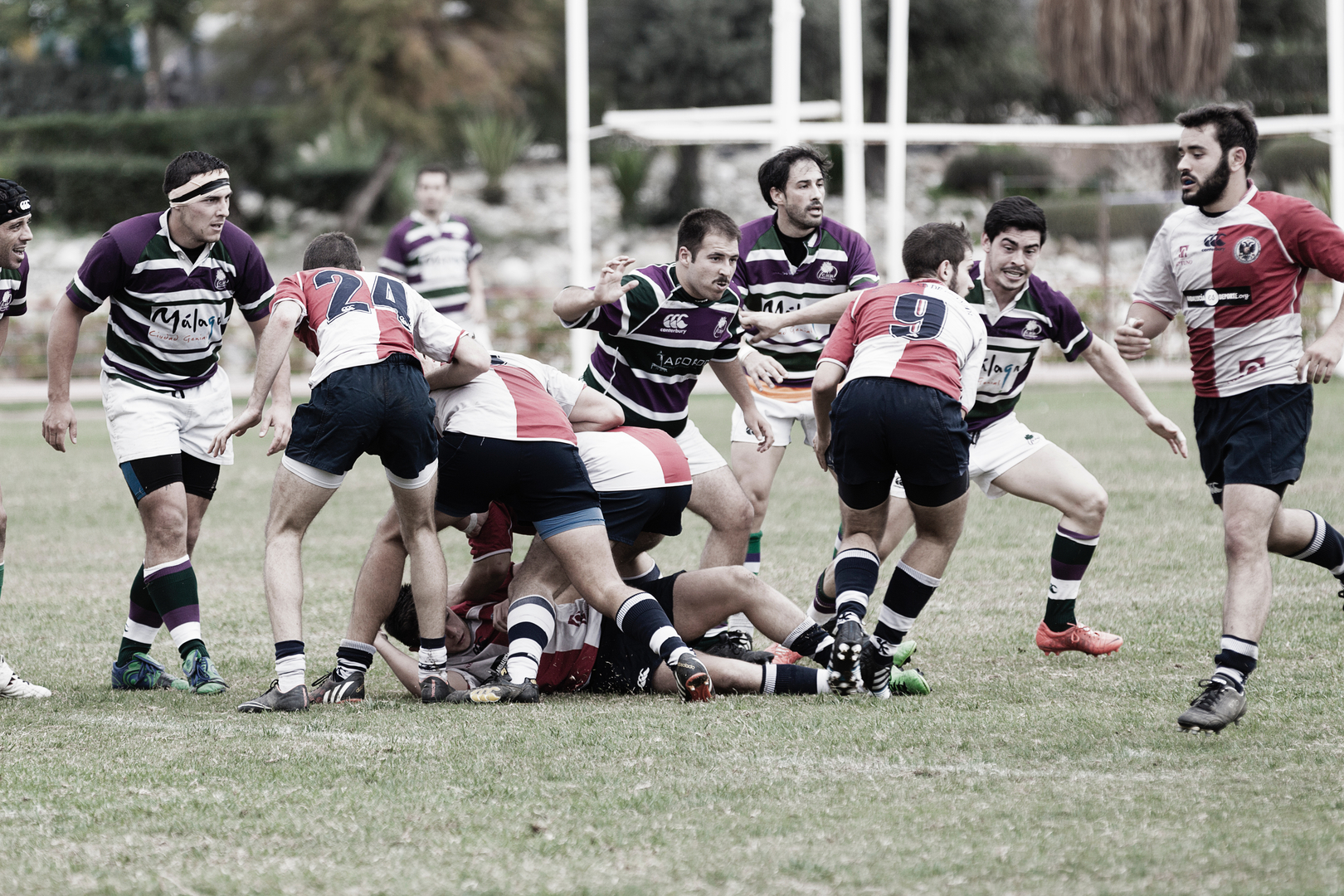Today, we’re going to give a brief introduction to two very common competitive points of contact in rugby: (1) the ruck and (2) the maul. Although both are very common in rugby, it can be a little difficult to understand what is happening because there are often a lot of players involved and the ball is often hard to see for spectators. Rucks and mauls are important in rugby because they are the main ways to recycle the ball back to a team after a player has been either tackled to the ground or held up. Although they are similar in that multiple players compete for possession of the ball, a ruck is largely static with players competing for the ball on the ground while a maul moves forward and backward with players competing for the ball in-hand.
(1) The Ruck

A ruck is formed when a player with the ball is tackled and goes to ground. Players from each team must then come into contact and push the other team away from the ball. However, there are some basic rules to keep in mind when rucking:
- Players must be on their feet and over the ball.
- All players in a ruck must keep their heads and shoulders above their hips.
- Any player can join the ruck but they must do so from behind the hindmost player.
- Players who are not in the ruck must stay behind the offside line.
- Players in the ruck cannot put their hands on the ball.
- Players in the ruck cannot kick the ball.
- Players may use their feet to move the ball towards their team. But they must do this in a safe manner. They must not pick the ball up with their feet.
- Players must not fall on the ball.
- Players in the ruck must bind onto another player.
- Players not in the ruck must observe the offside line. The offside line starts at the hindmost point of the hindmost player of either team. It is parallel with the goal line. Players must join the ruck from behind the offside line. Otherwise, they will be offside.
(2) The Maul

- A maul is formed when the ball carrier is tackled but doesn’t go to the ground. At least one player from each team then binds to the ball carrier. Each team then tries to push the ball carrier to the other team’s goal line. However, players in a maul must obey the following rules:
- Players in the maul must bind to another player.
- Players must keep their heads and shoulders above their hips.
- Players must not collapse the maul on purpose.
- Players may move the ball backwards. But if the maul stops moving longer than five seconds, the team in possession must use the ball. Otherwise, there will be a scrum.
- Players not in the ruck must observe the offside line. The offside line – like with rucks – starts at the hindmost point of the hindmost player of either team. Players must join the maul from behind the offside line. Otherwise, they will be offside.
A maul ends when:
- it stops moving towards either goal line for longer than five seconds.
- the player with the ball leaves the maul.
- the player with the ball goes to the ground. If the player with the ball goes to ground, the ball must be released. Otherwise, there will be a scrum.
- the ball goes over the goal line.

No responses yet